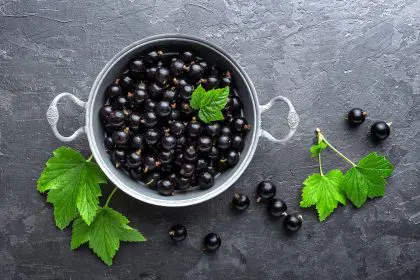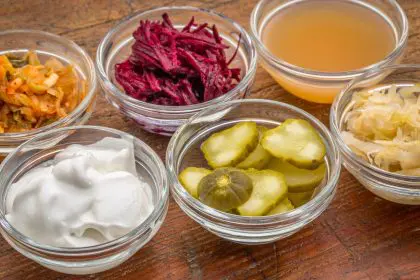You’ve tried every eye cream on the market. You’ve cucumber-sliced your eyes into oblivion. You’ve spent a small fortune on concealers promising to banish those stubborn dark circles. And yet, every morning, there they are—those persistent shadows under your eyes, making you look perpetually exhausted no matter how much sleep you get.
What if the solution isn’t in your bathroom cabinet but in your refrigerator? While the beauty industry keeps pushing topical treatments, the real key to brightening those raccoon eyes might actually come from the inside out. Those dark circles aren’t just skin deep—they’re often a visible symptom of what’s happening internally, and what you eat could be the game-changer you’ve been searching for.
The surprising truth about what causes those shadows
Before diving into dietary solutions, let’s get real about what’s actually causing those persistent under-eye shadows. Contrary to popular belief, dark circles aren’t always about sleep deprivation or age.
Those bluish-purple half-moons often appear because the skin under your eyes is incredibly thin—about 0.5mm compared to 2mm elsewhere on your body. This transparency allows the blood vessels underneath to show through, creating that shadowed appearance. When circulation is poor or blood vessels become dilated, those shadows become even more pronounced.
Many dark circles are also caused by hollowing in the tear trough area due to loss of fat and collagen, creating a shadow effect that no amount of sleep can fix. Others result from hyperpigmentation or allergies that cause inflammation around the eyes.
The common thread linking many of these causes? Nutrition. Your diet affects everything from circulation and inflammation to collagen production and skin thickness. That’s why targeting dark circles from the inside out can be dramatically more effective than just applying creams to the surface.
The iron-rich foods that banish blue circles
If your dark circles have a bluish tint, your body might be telling you something important about your iron levels. Iron deficiency is one of the most common nutritional causes of dark circles because it reduces hemoglobin, which carries oxygen in your blood.
With less oxygen circulating, blood vessels appear darker and more visible through the thin under-eye skin. This creates that characteristic bluish shadow that makes you look tired even after a full night’s sleep.
The fix isn’t another eye cream—it’s filling your plate with iron-rich foods that help restore healthy circulation. Lean red meat provides heme iron, the most bioavailable form that your body can easily absorb and utilize. Just 3-4 ounces a few times weekly can make a noticeable difference in under-eye appearance.
For vegetarians and vegans, lentils and spinach offer impressive non-heme iron content. A cup of lentils contains about 6.6 mg of iron—about one-third of your daily needs. Pairing these foods with vitamin C sources like bell peppers or citrus fruits increases iron absorption dramatically.
Dark chocolate lovers can celebrate because high-quality dark chocolate contains around 8 mg of iron per 100 grams. Choose varieties with at least 70% cocoa content for maximum benefits with less sugar. This might be the most delicious dark circle treatment ever.
People who’ve increased their iron intake often report seeing changes in their dark circles within 3-4 weeks, as new red blood cells develop and circulation improves. The transformation can be especially dramatic for those who were unknowingly iron-deficient.
The collagen-boosting foods that fill in hollow eyes
Many dark circles aren’t actually about pigmentation but about structure—specifically, the loss of fat and collagen that creates hollow areas that cast shadows. While fillers and creams attempt to address this externally, certain foods can help rebuild this crucial support structure from within.
Bone broth has skyrocketed in popularity for good reason—it’s one of the richest sources of collagen-building amino acids and minerals that support the delicate under-eye area. The glycine, proline, and arginine in bone broth provide the building blocks your body needs to strengthen thin under-eye skin.
Berries deliver a double benefit through their vitamin C content and anthocyanins. Vitamin C is essential for collagen synthesis, while anthocyanins strengthen blood vessels and improve circulation. Blueberries, blackberries, and raspberries are particularly potent choices for under-eye support.
Salmon and other fatty fish provide both omega-3 fatty acids and astaxanthin, a powerful carotenoid that improves skin elasticity. The healthy fats help maintain the fat pads under your eyes that prevent hollowing, while protein supports collagen maintenance. Aim for 2-3 servings weekly for noticeable results.
For vegetarian options, avocados offer healthy fats and vitamins E and C that support skin structure. The monounsaturated fats help maintain moisture and plumpness in the under-eye area, reducing the shadowy appearance of hollow tear troughs.
Building collagen takes time, so be patient—most people notice improvements after about 6-8 weeks of consistently including these foods in their diet. The gradual filling effect looks far more natural than what topical products can achieve.
The anti-inflammatory foods that lighten brown circles
If your dark circles have a brownish tint, inflammation and allergies might be the culprits. These triggers cause blood to rush to the area and can increase melanin production, leading to hyperpigmentation under the eyes.
Turmeric contains curcumin, one of nature’s most powerful anti-inflammatory compounds. It helps reduce the inflammation that can cause blood vessels to dilate and become more visible. For maximum absorption, combine turmeric with black pepper and a healthy fat like olive oil or avocado.
Leafy greens like kale, spinach, and Swiss chard are packed with lutein and zeaxanthin, antioxidants that specifically accumulate in the skin around your eyes. These compounds help filter blue light and reduce oxidative damage that can worsen pigmentation under the eyes.
Wild-caught salmon and other fatty fish provide omega-3 fatty acids that calm inflammatory responses throughout the body. These healthy fats help reduce the allergic responses that often manifest as puffiness and darkening around the eyes.
For a simple daily habit, green tea contains catechins that reduce inflammation while providing mild caffeine that can help constrict blood vessels. The result is less visible darkness and puffiness under the eyes, especially when consumed regularly.
People with allergy-related dark circles often see improvement within 2-3 weeks of adopting an anti-inflammatory diet. The change can be particularly dramatic during high-allergy seasons when dark circles typically worsen.
The hydration heroes that plump thin skin
Dehydration is often overlooked as a cause of dark circles, but it can significantly worsen their appearance by making the skin under your eyes even thinner and more transparent.
Cucumbers aren’t just for placing on your eyes—eating them provides silica, a mineral that strengthens connective tissue while delivering hydration. Their high water content and vitamin K also help reduce water retention that can create shadows under the eyes.
Watermelon contains an amino acid called L-citrulline that improves blood flow while providing intense hydration. This improved circulation helps reduce the visibility of blood vessels under the thin eye skin while plumping the area with moisture.
Coconut water delivers electrolytes that help your cells maintain proper fluid balance. This balanced hydration is more effective than water alone for maintaining moisture in the delicate under-eye area and preventing the thin, crepe-like appearance that accentuates dark circles.
For a warming option, bone broth provides not only collagen-building compounds but also hydration with electrolytes and minerals that support skin structure. It’s particularly effective during colder months when heated hydration options are more appealing.
Many people notice immediate improvements in their dark circles when properly hydrated, sometimes within just 24-48 hours. The plumping effect of proper hydration can dramatically reduce the shadowed appearance, especially for those who were chronically dehydrated.
The sleep-supporting foods for better overnight repair
While dark circles aren’t always about sleep, poor sleep quality certainly makes them worse by hindering your body’s natural repair processes. Certain foods can help improve sleep architecture, allowing more effective overnight renewal of the under-eye area.
Tart cherries are one of the few natural sources of melatonin, the hormone that regulates sleep-wake cycles. Their antioxidants also fight inflammation while your body repairs itself. A small glass of tart cherry juice about an hour before bed can improve both sleep onset and quality.
Kiwi fruit contains serotonin precursors and antioxidants that have been shown to improve both sleep duration and quality in clinical studies. Two kiwis eaten about an hour before bedtime can help you fall asleep more quickly and stay asleep longer, enhancing overnight tissue repair.
Walnuts provide ALA omega-3 fatty acids along with melatonin, creating the perfect nutritional combination for better sleep quality. A small handful as an evening snack supports your body’s natural regeneration processes while you sleep.
For those who enjoy a warm evening beverage, chamomile tea increases glycine, a neurotransmitter that relaxes nerves and muscles while acting as a mild sedative. This deeper relaxation enhances the restorative slow-wave sleep that’s crucial for skin repair and regeneration.
The sleep-enhancing effects of these foods can begin working within the first night, though the cumulative benefits for dark circles typically become visible after about two weeks of consistently improved sleep quality.
When to seek professional help for persistent dark circles
While dietary changes can dramatically improve most dark circles, some situations warrant medical attention. Consider consulting a healthcare provider if:
Your dark circles appear suddenly and severely without obvious cause, which could indicate underlying health issues You experience additional symptoms like extreme fatigue, dizziness, or shortness of breath alongside dark circles You’ve made consistent dietary improvements for 8-12 weeks without seeing any change in your dark circles One eye has significantly darker circles than the other, which could indicate localized issues requiring evaluation
A healthcare provider can check for underlying conditions like thyroid problems, anemia, or allergies that might be causing or worsening your dark circles.
The path to brighter, more refreshed-looking eyes might not lead to the beauty counter after all, but straight to your kitchen. By addressing dark circles from the inside out, you’re not just masking symptoms but actually resolving the root causes—something no eye cream alone can accomplish. Your eyes are about to reveal just how healthy you’re becoming, one meal at a time.


















